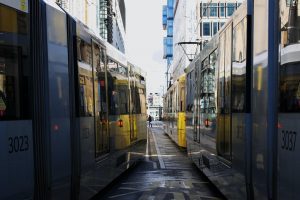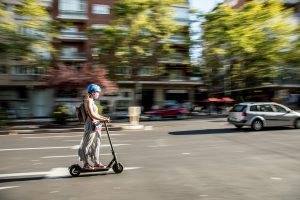
Mobility has increased immensely over the past few decades. Ask any person around you how much of the world they have seen, and you will get completely different answers compared to twenty years ago. The world has become smaller and increasingly connected, allowing us to travel more, yet also have a larger footprint as we go around. Our means of mobility have evolved parallel to our new norms of traveling. Yet, how come that with the increase of travel, public transport has gained slower adoption compared to car usage?
The proportion of train and bus usage compared to total transportation has seen a decline of 1,2% over the past twenty years. Although this doesn’t necessarily imply a decrease in the use of public transport overall, it does tell us that the use of other modes has gained larger traction throughout time. And this poses a problem if we want to keep being mobile, without harming our planet.
In order to tackle this, last December, the European Commission adopted four different proposals to modernise and improve the EU’s transportation system. These proposals focus on aspects such as high-speed railway connections, increase in transhipment terminals, and sustainable urban mobility. So what are the proposed actions the European Commission will take, and what else is needed to change mobility behaviour towards a more sustainable norm? Here are some of our thoughts on four key pillars for development of the public transportation system: technological capabilities, connectivity, economic policy, and digital innovation.
Connectivity
Buildin upon our last article on technical development of the public transport system, another aspect important to consider is connectivity. Smart and connected cities make it appealing for the urbanized population to make use of different modalities and flexible travel options. Connectivity should be increased both within and in between cities for a more accessible and sustainably mobility system. At least two things will need to change here:
Multi modal travel
Within cities, car ownership becomes less attractive, yet road usage within many cities is still prioritized to cars. People are increasingly exploring multimodal travel by combining public transport with shared mobility services. Many providers of shared services are stepping into the market to offer lean mobility options to travellers and build interesting services on top of this proposition. Yet, we have seen that for these mobility options to become a better success, cities and authorities should cooperate in terms of urban planning.
A clear example has been the use of shared scooters in various European cities. In early stages people would use shared scooters and drop them anywhere after usage as designated spots were lacking. Collaborative efforts between providers and local authorities then made it possible to park shared vehicles at certain spots. Some cities now even have complete mobility hubs spread across the city, where travellers can choose between different shared options.

It is only because of the city’s intervention to provide these special areas, that shared mobility has become an added value to the city rather than a disruptive means of transport. This development really marks the cities of tomorrow.
City-to-city travel
Secondly, we come back to the point of train connectivity. Currently, the best-connected city of Europe is Amsterdam (with over 100 connections), followed by cities such as Milan and a large number of German places like Leipzig, Nürnberg, Köln, and Düsseldorf. However, the smartest European cities such as London, Paris, Copenhagen or Berlin, don’t demonstrate similar levels of connectivity, with some of these places only having about half of the connections Amsterdam has.

It is important for the EU and national governments to focus on parallel development where, as cities become smarter and more digitally connected, they also become more physically connected. Commuters needing to visit such large cities should not even think twice about hopping on the train instead of catching a flight. Both the pricing and convenience should allow for a trip from London to Berlin, or from Copenhagen to Amsterdam to become the most straight forward and appealing option, for any social group within society.
What’s coming up next
In our next two articles, we will cover how economic policy and digital innovation can support the transition to a more sustainable transport system. Keep an eye out on our LinkedIn page or our blog!

